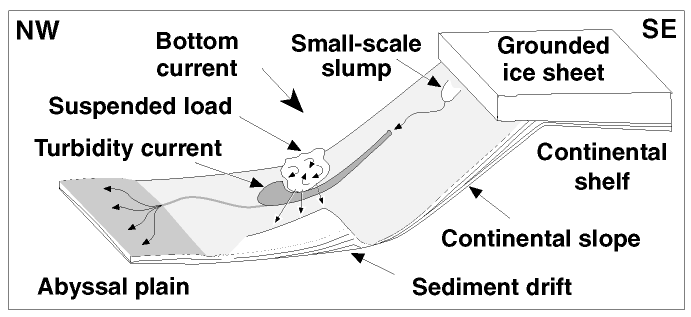Figure F3. Schematic drawing of the processes active during glacial half-cycles, leading to the development of hemipelagic sediment drifts on the continental rise (adapted from Rebesco et al., 1997). The unstable component of unsorted upper-slope deposits forms first a slump and debris flow, sourcing a turbidity current. Its fine fraction is suspended and entrained in ambient bottom currents to be deposited downcurrent. Drifts are built above the level of the turbidity current channels because (in the case of the Antarctic Peninsula margin and perhaps elsewhere) subsequent turbidity currents erode the deposited sediment everywhere except upon the drifts, maintaining the steeper drift slopes at the limit of stability.

![]()